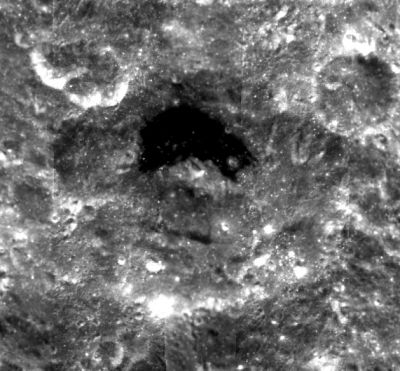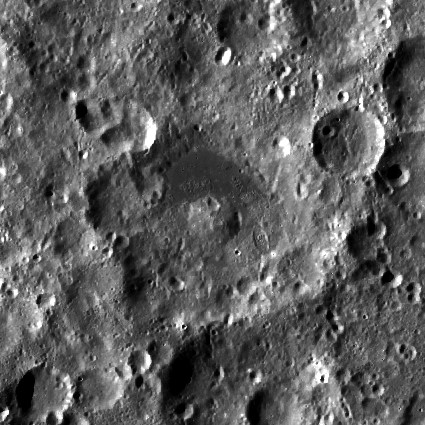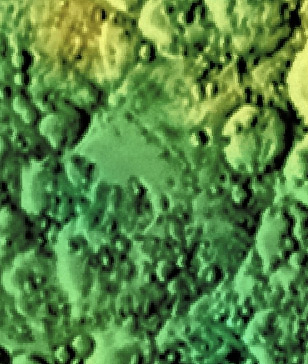Difference between revisions of "Bolyai"
(Created page with "<div id="content_view" class="wiki" style="display: block"> =Bolyai= {| class="wiki_table" | Lat: 33.6°S, Long: 125.9°E, Diam: 135 km, Depth: km, Rükl: ''(farside)''<br...") |
|||
| (3 intermediate revisions by the same user not shown) | |||
| Line 5: | Line 5: | ||
|- | |- | ||
| | | | ||
| − | [http://lpod.org/coppermine/displayimage.php?pid=4191&fullsize=1 [[Image: | + | [http://lpod.org/coppermine/displayimage.php?pid=4191&fullsize=1 [[Image:Normal_bolyai-large.jpg|external image normal_bolyai-large.jpg]]]<br /> |
| | | | ||
| − | [[Image:Bolyai.jpg|Bolyai.jpg]][[Image: | + | [[Image:Bolyai.jpg|Bolyai.jpg]][[Image:Bolyai-color.jpg|bolyai-color.jpg]]<br /> |
|} | |} | ||
| − | ''left:'' [http://pdsmaps.wr.usgs.gov/explorer-bin/mapmars4.cgi?WHEREFROM=PZ&VERSION=INTERMEDIATE&DATA_SET_NAME=moon_clementine_bw&PIXEL_TYPE=BIT8&SCALE=pixels/degree&PROJECTION=SINUSOIDAL&RESOLUTION=128&RESAMP_METHOD=NEAREST_NEIGHBOR&BANDS_SELECTED=&FORMAT=JPEG&LONBOX=8&LATBOX=8&GRIDLINE_FREQUENCY=none&STRETCH=NONE&LAT=-33&LON=126.5&LINE=1024&SAMP=928 Clementine] . ''center: '''LROC''''' .<br /> r''ight:'' [http://planetarynames.wr.usgs.gov/images/Lunar/lac_117.pdf Colo-coded Lac 117] from [http://the-moon. | + | ''left:'' [http://pdsmaps.wr.usgs.gov/explorer-bin/mapmars4.cgi?WHEREFROM=PZ&VERSION=INTERMEDIATE&DATA_SET_NAME=moon_clementine_bw&PIXEL_TYPE=BIT8&SCALE=pixels/degree&PROJECTION=SINUSOIDAL&RESOLUTION=128&RESAMP_METHOD=NEAREST_NEIGHBOR&BANDS_SELECTED=&FORMAT=JPEG&LONBOX=8&LATBOX=8&GRIDLINE_FREQUENCY=none&STRETCH=NONE&LAT=-33&LON=126.5&LINE=1024&SAMP=928 Clementine] . ''center: '''LROC''''' .<br /> r''ight:'' [http://planetarynames.wr.usgs.gov/images/Lunar/lac_117.pdf Colo-coded Lac 117] from [http://the-moon.us/wiki/USGS%20Digital%20Atlas USGS Digital Atlas]<br /> <br /> <div id="toc"> |
| − | + | ||
| − | |||
==Images== | ==Images== | ||
[http://www.lpod.org/coppermine/thumbnails.php?album=search&type=full&search=Bolyai LPOD Photo Gallery] [http://www.lpi.usra.edu/resources/lunar_orbiter/bin/srch_nam.shtml?Bolyai%7C0 Lunar Orbiter Images] [http://www.lpi.usra.edu/resources/apollo/search/feature/?feature=Bolyai Apollo Images]<br /> - Lots of odd-looking details on '''Bolyai''''s dark mare like floor! These details are noticeable on the Hi-Res scan of [http://www.lpi.usra.edu/resources/lunarorbiter/images/preview/3121_h3.jpg Lunar Orbiter 3's frame 121-h3] ('''Bolyai''' is located near the frame's upper right corner, south up).<br /> - Apollo 17's ''Fairchild''-camera photograph [http://www.lpi.usra.edu/resources/apollo/frame/?AS17-M-3183 AS17-M-3183] (made during Trans Earth Coast, TEC) shows '''Bolyai''' near the frame's upper margin.<br /> - Research Lunar Orbiter 3 and Apollo 17 photography: Danny Caes<br /> <br /> | [http://www.lpod.org/coppermine/thumbnails.php?album=search&type=full&search=Bolyai LPOD Photo Gallery] [http://www.lpi.usra.edu/resources/lunar_orbiter/bin/srch_nam.shtml?Bolyai%7C0 Lunar Orbiter Images] [http://www.lpi.usra.edu/resources/apollo/search/feature/?feature=Bolyai Apollo Images]<br /> - Lots of odd-looking details on '''Bolyai''''s dark mare like floor! These details are noticeable on the Hi-Res scan of [http://www.lpi.usra.edu/resources/lunarorbiter/images/preview/3121_h3.jpg Lunar Orbiter 3's frame 121-h3] ('''Bolyai''' is located near the frame's upper right corner, south up).<br /> - Apollo 17's ''Fairchild''-camera photograph [http://www.lpi.usra.edu/resources/apollo/frame/?AS17-M-3183 AS17-M-3183] (made during Trans Earth Coast, TEC) shows '''Bolyai''' near the frame's upper margin.<br /> - Research Lunar Orbiter 3 and Apollo 17 photography: Danny Caes<br /> <br /> | ||
==Maps== | ==Maps== | ||
| − | ''([http://the-moon. | + | ''([http://the-moon.us/wiki/LAC%20zone LAC zone] 117B2)'' [http://planetarynames.wr.usgs.gov/images/Lunar/lac_117.pdf USGS Digital Atlas PDF]<br /> <br /> |
==Description== | ==Description== | ||
| − | '''Bolyai''' for all intents and purposes looks like it's in transition between a crater and a mare. Barely perceptable as a crater with nearly all of its rim worn down, most of it has been bombarded by countless impacts. The one and only characteristic that stands out is the mare material that fills most of its northern floor. This black-ish material -- extruded from underneath '''Bolyai's''' floor after the initial impact that created the crater -- flowed (possibly) in a southerly direction (note, the the color-coded Lac 117 image above shows the region is slightly lower in the south, 'green color', than in the north, 'yellow color' by about a 1000 metres. The central peak, or island, in '''Bolyai''' may have restricted the flow somewhat, else, if not, then perhaps we might have been looking at an even more larger portion of this dark mare material inside the floor itself. The 135 kilometre-sized crater lies very close to the outer, north-western rim of the [http://the-moon. | + | '''Bolyai''' for all intents and purposes looks like it's in transition between a crater and a mare. Barely perceptable as a crater with nearly all of its rim worn down, most of it has been bombarded by countless impacts. The one and only characteristic that stands out is the mare material that fills most of its northern floor. This black-ish material -- extruded from underneath '''Bolyai's''' floor after the initial impact that created the crater -- flowed (possibly) in a southerly direction (note, the the color-coded Lac 117 image above shows the region is slightly lower in the south, 'green color', than in the north, 'yellow color' by about a 1000 metres. The central peak, or island, in '''Bolyai''' may have restricted the flow somewhat, else, if not, then perhaps we might have been looking at an even more larger portion of this dark mare material inside the floor itself. The 135 kilometre-sized crater lies very close to the outer, north-western rim of the [http://the-moon.us/wiki/South%20Pole-Aitken%20Basin South Pole Aitken Basin] -- a 2500 kilometre-wide basin of the [http://the-moon.us/wiki/Stratigraphy pre-Nectarian] period (~ 4.6 to 3.92 bn years), and some 400 kilometres due south of another in-filled, transitional type basin-crater, called, [http://the-moon.us/wiki/Tsiolkovskiy Tsiolkovskiy]. <span class="membersnap">- JohnMoore2</span><br /> <br /> |
==Description: Wikipedia== | ==Description: Wikipedia== | ||
[http://en.wikipedia.org/wiki/Bolyai_(crater) Bolyai]<br /> <br /> | [http://en.wikipedia.org/wiki/Bolyai_(crater) Bolyai]<br /> <br /> | ||
| Line 30: | Line 29: | ||
<br /> <br /> | <br /> <br /> | ||
---- | ---- | ||
| − | + | </div> | |
Latest revision as of 20:03, 16 April 2018
Contents
Bolyai
| Lat: 33.6°S, Long: 125.9°E, Diam: 135 km, Depth: km, Rükl: (farside) | |
right: Colo-coded Lac 117 from USGS Digital Atlas
Images
LPOD Photo Gallery Lunar Orbiter Images Apollo Images
- Lots of odd-looking details on Bolyai's dark mare like floor! These details are noticeable on the Hi-Res scan of Lunar Orbiter 3's frame 121-h3 (Bolyai is located near the frame's upper right corner, south up).
- Apollo 17's Fairchild-camera photograph AS17-M-3183 (made during Trans Earth Coast, TEC) shows Bolyai near the frame's upper margin.
- Research Lunar Orbiter 3 and Apollo 17 photography: Danny Caes
Maps
(LAC zone 117B2) USGS Digital Atlas PDF
Description
Bolyai for all intents and purposes looks like it's in transition between a crater and a mare. Barely perceptable as a crater with nearly all of its rim worn down, most of it has been bombarded by countless impacts. The one and only characteristic that stands out is the mare material that fills most of its northern floor. This black-ish material -- extruded from underneath Bolyai's floor after the initial impact that created the crater -- flowed (possibly) in a southerly direction (note, the the color-coded Lac 117 image above shows the region is slightly lower in the south, 'green color', than in the north, 'yellow color' by about a 1000 metres. The central peak, or island, in Bolyai may have restricted the flow somewhat, else, if not, then perhaps we might have been looking at an even more larger portion of this dark mare material inside the floor itself. The 135 kilometre-sized crater lies very close to the outer, north-western rim of the South Pole Aitken Basin -- a 2500 kilometre-wide basin of the pre-Nectarian period (~ 4.6 to 3.92 bn years), and some 400 kilometres due south of another in-filled, transitional type basin-crater, called, Tsiolkovskiy. - JohnMoore2
Description: Wikipedia
Additional Information
Nomenclature
- Janos Bolyai (December 15, 1802 - January 27, 1860) was a Hungarian mathematician, known for his work in non-Euclidean geometry. He became so obsessed with Euclid's parallel postulate that his father wrote to him: "For God's sake, I beseech you, give it up. Fear it no less than sensual passions because it too may take all your time and deprive you of your health, peace of mind and happiness in life". János, however, persisted in his quest and eventually came to the conclusion that the postulate is independent of the other axioms of geometry and that different consistent geometries can be constructed on its negation. He wrote to his father: "Out of nothing I have created a strange new universe". Between 1820 and 1823 he prepared a treatise on a complete system of non-Euclidean geometry. Bolyai's work was published in 1832 as an appendix to a mathematics textbook by his father. Gauss, on reading the Appendix, wrote to a friend saying "I regard this young geometer Bolyai as a genius of the first order".
LPOD Articles
Bibliography


